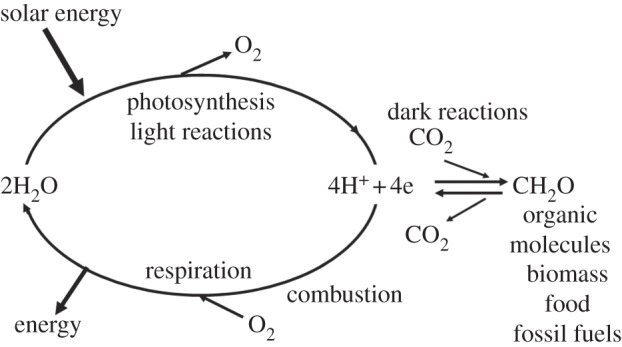Figure 1.

A diagrammatic representation of energy flow in biology. The light reactions of photosynthesis (light absorption, charge separation, water splitting, electron/proton transfer) provides the reducing equivalents in the form of energized electrons (e) and protons (H+) to convert carbon dioxide (CO2) into carbohydrates (CH2O) and other organic molecules which make up living organisms (biomass), including those that provide humankind with food. The same photosynthetic reactions gave rise to the fossil fuels formed millions of years ago. The burning of these organic molecules either by respiration (controlled oxidation within our bodies) or by combustion of biomass and fossil fuels to power our technologies, is the reverse to photosynthesis, releasing CO2 and combining the stored ‘hydrogen’ back with oxygen to form water. In so doing energy, which is originated from sunlight, is released.
